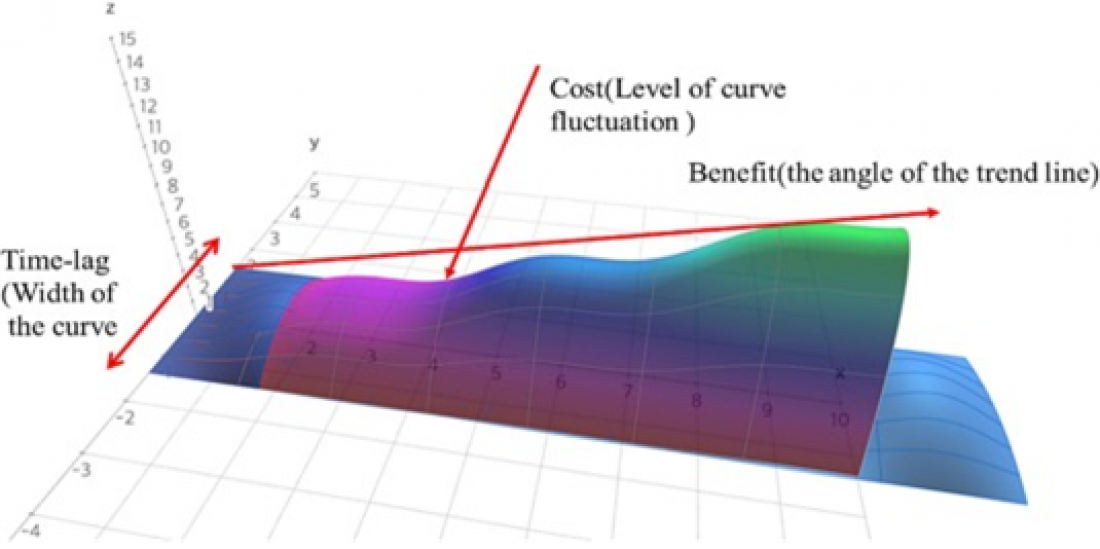□ Principal Researcher Jinhyo Yoon of the Electronics and Information Systems Research Department at DGIST (President Kunwoo Lee), serving as the first author and corresponding author, led the writing of the paper “Micro Open Innovation Dynamics under Inter-Rationality.” The paper was published in Technological Forecasting and Social Change, a journal that is counted among the global top one percent in the innovation economy field, on February 12, 2024.
□ “Micro Open Innovation Dynamics” refers to the dynamic innovations that occur in the market as businesses collaborate with specific external universities, research institutes, customers, or other companies. By analyzing micro-open innovation dynamics, the paper moves beyond traditional macro-open innovation models, providing concrete strategic models that enable individual businesses to adapt and grow flexibly.
□ This study, led by Principal Researcher Jinhyo Yoon's team and based on their 2022 publication in the same journal titled “Inter-Rationality: Modeling of Bounded Rationality in Open Innovation Dynamics,” presents a micro-level view of how open innovation occurs continuously in situations of bounded rationality. By applying Nobel Laureate Herbert Simon's bounded rationality model to the dynamics of open innovation, the study models the micro growth patterns of companies into eight categories and demonstrates the industrial applicability of each model through patent data analysis.
□ Notably, the study subdivides micro-open innovation into eight categories, modeling their key characteristics. The existence of differentiating open innovation levers crucial to company growth is evidenced through patent analysis in South Korea and the US. The time-dimension analysis of Korean patents significantly proves the practical value of this model.
□ The results are expected to provide substantial benefits for companies worldwide and domestically in planning and implementing strategies for open innovation in the future. Additionally, these models can reduce confusion and complexity in the process of practicing open innovation strategies, serving as a useful guide for companies to successfully establish and execute open innovation strategies in real business environments.
□ Jinhyo Yoon, the publisher and editor-in-chief of the world's largest open innovation journal, Journal of Open Innovation: Technology, Market, and Complexity, and the head professor at the Open Innovation Academy, stated, "This research offers a new, higher level of understanding of micro open innovation dynamics to open innovation research groups, related consulting industries, and corporate fields worldwide.”
□ Furthermore, Principal Researcher Jinhyo Yoon expressed gratitude for the dedication of all co-authors over the past five years, including globally renowned open innovation mathematical modeling scholar Professor Heungju Ahn from DGIST, internationally recognized causality loop modeling authority Professor Kyungbae Park from Sangji University, Dr. Uiseob Jung from KISTI, who has worked on patent open innovation data mining for over a decade, and Dr. Hyobi Cho from DGIST, who has steadfastly conducted open innovation research.
□ In addition, Principal Researcher Jinhyo Yoon is currently leading the research team on a follow-up study that focuses on implementing distinctive, individualized artificial intelligence (Individual AI) based on the micro-dynamics of open innovation. This subsequent research builds upon the foundational studies of bounded rationality by Nobel Laureate Herbert Simon, conducted in the 1950s, which were among the first to explore human bounded rationality in the context of AI. This research contrasts with general artificial intelligence (general AI) by focusing on “individual AI,” which is grounded in the principles of open innovation.
□ This study, with DGIST's Electronics and Information Systems Research Department's Principal Researcher Jinhyo Yoon as the first author and corresponding author, has been published in Technological Forecasting and Social Change, which is rated among the top one percent journals in the innovation economy field, on February 12, 2024.
- Ccorresponding Author E-mail Address : [email protected]



